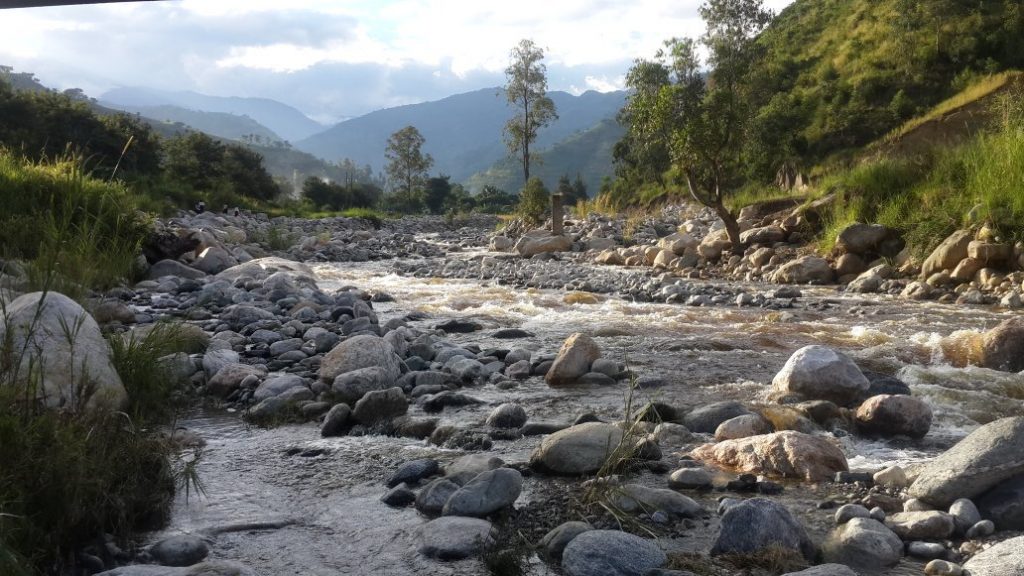River Nyamwamba is located in Kasese district in Western Uganda and is fed by melting glaciers from the ‘mountains of the moon’. It emerges from the mountain and flows to Lake George in the Albertine Rift. The once famous river known to support life and agriculture through irrigation in Mubuku Irrigation Scheme, has continuously been hurt by climate change, and it is feared that soon its life may end.
Until recently, the people of Kasese area have entirely depended on the River Nyamwamba as their main source of water, for both agriculture and domestic use.
Previously, the region had a bimodal climate, with two rainy seasons. One started in March to June, and the second lasted from October until December. However, these seasons have changed drastically to the extent that it is hard to predict the weather conditions, as a result, many dangers keep coming up.

In early days, the area used to have much more rainfall than today, this a big change, and now this area is hotter than 20 years ago. Until about 1988 the climate was good, the area had a known two rainy seasons and they were very reliable. Now the March to June season in particular isn’t reliable, which doesn’t favor the crops to grow in some area of Kasese. On contrast the first rains come so hard and sweep away both crops and the soil causing massive landslides.
These changes mainly affected the subsistence farmers who depended on rain fed crops. The unreliability of rainfall made the area entirely depend on the river for irrigation where early mature varieties have since been emphasized leading to the disappearance of native traditional varieties. The subsistence farmers who are experiencing the pinch of climate change have resorted to planting crop varieties which mature faster.
The continued melting of glaciers from Mountain Rwenzori due to high temperatures is causing the River Nyamwamba to carry more water down the stream as it dries up. During the morning, one can hardly see water in the river. In the middle of the hot day when ice has melted the water comes in large quantities with potential to sweep away bridges, crops and even flooding to people’s houses downstream.
The people living around Mountain Rwenzori have cultural values attached to it, thus the effects of climate on these people do not only affect their activities but cultures as well. The natives of Kasese believe that the snow on top of Rwenzori Mountain is key to the survival of his tribesmen. The name ‘Abanyarwenzururu’, means ‘people from the land of snow’. This makes the natives more worried about the melting glaciers supplying River Nyamwamba. They believe that when the snow disappears completely the people will disappear as well.
The current climatic changes and behavior of the River Nyamwamba is believed to be controlled by the gods who live in the mountain. It is believed that when the gods became unhappy and irritated they release a lot of disastrous water at ago aimed at punishing the community for wrong doing. Residents remain uncertain of how they will live minus the river.
Apart from Mountain Rwenzori in western Uganda, Mount Elgon National Park lies in eastern Uganda and is best for mountain hiking lifetime experiences to witness Sipi Falls. Semuliki National Park is famous for Sempaya hot springs in Uganda, while Queen Elizabeth, Murchison Falls and Lake Mburo National Park among others are places where visitors can have unforgettable Uganda safari memories.
